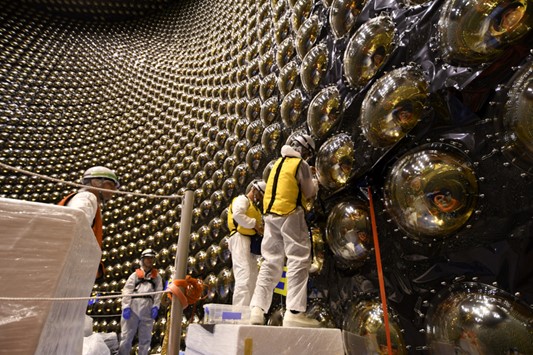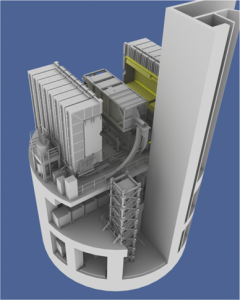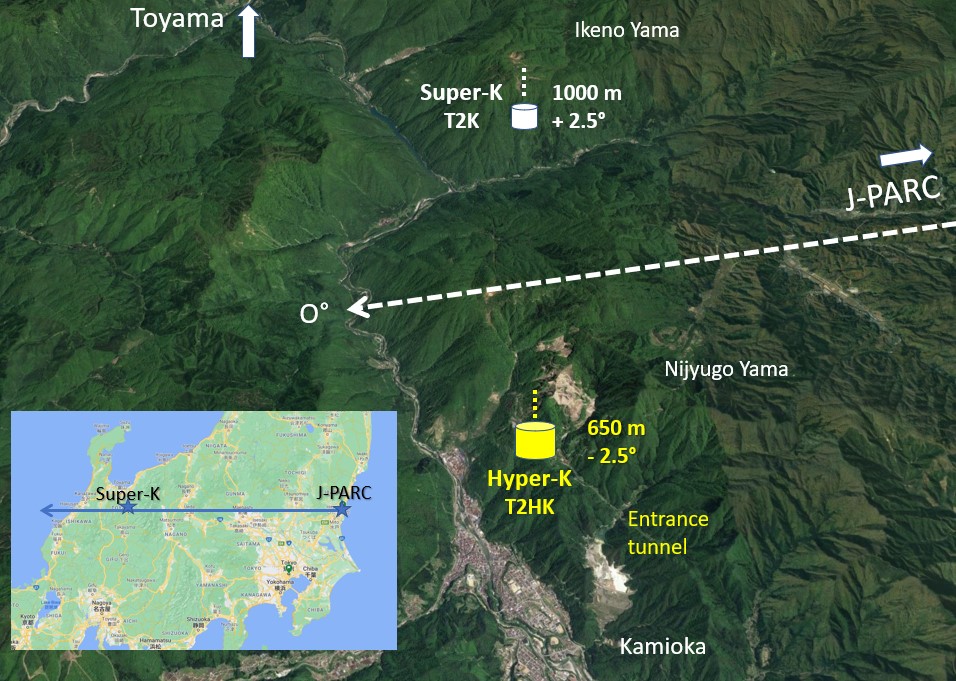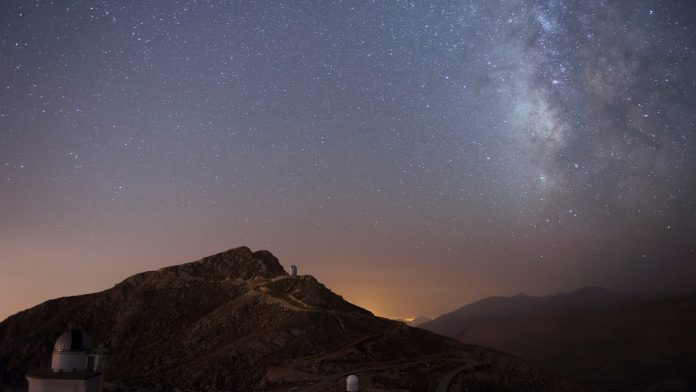Michel Gonin, Senior physicist, and Professor at Leprince-Ringuet laboratory, discusses the latest neutrino experiments and how they are key to our understanding of the formation and evolution of the Universe.
In search of new discoveries, the field of elementary particles, cosmology and astrophysics explore the big questions: What the Universe is made of? And what are its fundamental laws at the smallest and largest scales? The history of our Universe has been dominated by the intimate relationship between these areas since its beginnings just under 14 billion years ago. Within these fields, those that use neutrinos have unique and amazing characteristics due to the “enormous penetrating power” into matter of this elementary particle. Neutrino research is inspired by some of the biggest questions about our Universe such as: What is the composition of dark matter; what happened to antimatter in the early Universe, or the rate of supernova explosions over time? This requires collaborative efforts from experiments at the cutting edge of fundamental research with some of the most sensitive detectors, powerful accelerators, and significant theoretical effort in new fields of physics. In Japan, a new neutrino research programme, covering the next decade, has emerged. More recently, the operation of adding gadolinium to the Super-Kamiokande(1) (Super-K) water tank, the construction of upgrades for phase 2 of the T2K experiment(2) (T2K-II) and the approval by the Japanese government of the new Hyper-Kamiokande(3) (Hyper-K) project have been significant additions to the programme. The neutrino research programme represents potential for extraordinary discoveries unique in the history of physics.
Neutrinos, an ideal tool for studying the smallest and largest scales of the Universe
Neutrinos are nature’s most elusive elementary particles due to their extremely weak interactions with matter. The study of the characteristics of neutrino flavour mixing, information that neutrinos give us on celestial phenomena, and the determination of their intrinsic properties have been of major importance in high energy physics for many decades.
The phenomenon of quantum mixing has provided one of the most exciting developments in high energy physics. Quantum oscillations of atmospheric and solar neutrinos were discovered in 1998 (Nobel Prize 2015), which is only possible if neutrinos carry masses. These observations are currently the only experimental proof of the existence of a physics beyond the standard model of elementary particles. Indeed, the discovery of the Higgs boson at the Large Hadron Collider was a great success in particle physics, but the Higgs boson should not be sufficient to explain the hierarchy of masses of fermions including neutrinos. Recently, neutrino experiments established that the third and last mixing angle θ13 is relatively large. Therefore, measurements of the CP phase were possible, which is a tool for understanding why the Universe is made from matter rather than from antimatter. The concept of these measurements is to produce beams of neutrinos and anti-neutrinos from proton accelerators to measure their oscillation properties with detectors near and far from the point of production.
Over the past fifty years, a new kind of astronomy has emerged with the construction of very large telescopes buried miles underground, in water or ice, which detect neutrinos instead of photons. These telescopes are unique tools, used to observe the Sun and the last moments in the life of the largest stars in our galaxy, as they collapse under their own weight to produce compact stellar objects such as neutron stars or black holes. Kamiokande – the predecessor of Super-K – has made the first and so far, only detection of neutrinos from such an explosion by observing SN1987A neutrinos from the Large Magellan Cloud in 1987 (Nobel Prize 2002). Eleven events were detected, enough to demonstrate that the estimated total energy, 99% of which is emitted as neutrinos, and the duration of the burst are compatible with the basic mechanism of supernova explosions.
Due to the elusiveness of neutrinos, detecting them requires the use of extremely large detectors placed in underground laboratories with very low natural radioactivity shielded from cosmic radiation. Currently, a new generation of several very large neutrino detectors are being built around the world, using different detection techniques, sometimes combined with powerful accelerators to advance our knowledge of neutrino science. In Japan, the neutrino detection methods for large fiducial volumes in current and future experiments, are based on the use of the Cherenkov effect of charged particles produced during the interaction of incident neutrinos with water. For smaller detectors, such as T2K’s near detectors, the detection techniques are very varied, ranging from scintillating fibres to time-projection-chambers.

Super-Kamiokande
Super-Kamiokande (Super-K) is a 50,000 ton underground pure water detector, that has 11,000 20-inch photomultipliers (PMT) as its inner detector, and 1,885 8-inch PMTs as its outer detector. It is the largest pure water detector in the world for neutrinos, ranging in energy from a few MeV to tens of GeV. Since it started collecting data in 1996, the range and variety of research topics that have been covered by the Super-K experiment is truly impressive. This collaboration contributed to measurements of all known oscillation parameters of the Standard Model of particle physics. The limits on the lifetime of nucleons were also improved by Super-K measurements. Concerning the search for dark matter in our Universe, the experiment set limits for the indirect signal of low mass WIMPs. For a Supernova explosion occurring in our Galaxy, several thousand neutrino events will be detected in the Super-K water tank, due to inverse beta reactions and electrons scattering events indicating the direction of the supernova with exceptional precision.
It is believed that there are supernova explosions happening somewhere in the Universe every second. Since neutrinos are emitted for every supernova explosion in gigantic quantities, they diffuse and accumulate in the Universe. They are called “Relic Supernova Neutrinos” or the “Diffuse Supernova Neutrino Background” and represent an important topic of research for Super-K over the next seven to eight years. According to theoretical calculations, there are upwards of thousands of neutrinos passing through an area the size of a human hand every second, which corresponds to several neutrino interactions in Super-K each year. Electron anti-neutrinos are most reactive in the Super-K detector producing a positron and a neutron. Recently, around thirty tons of gadolinium were introduced into the large Super-K water tank to unambiguously identify the electron anti-neutrinos. Gadolinium has the highest cross section for capturing neutrons among the natural elements. Neutrons generated by electron anti-neutrino interactions in water will therefore be captured producing gamma rays with the creation of characteristic signals. With a concentration of 0.011% in Super-K, 50% of the neutrons will be captured by gadolinium, and this number becomes 90% with a concentration of 0.1%. The addition of gadolinium will improve the sensitivity of the detector for many other research subjects studied by the Super-K and T2K collaborations. In order to study the effect of dissolving gadolinium in the Super-K tank, a R&D project called EGADS has been running in the Kamioka mine. This project was funded in 2009, and since then, a new hall near the SK detector has been excavated and a 200 m3 stainless steel tank with ancillary equipment has been constructed. In June 2015, based primarily on EGADS results, the Super-K Collaboration approved the gadolinium project.
It took more than six months in 2018 for the Super-K collaboration to completely renovate the large water tank. Before to this upgrade, the Super-K tank was leaking approximately one ton of pure water every day. Since then, the detector has been continuously monitored, and no significant leaks have been observed. The loading of the thirteen tons of gadolinium started on 14th July 2020. Pure water was sent from the top of the SK tank to the gadolinium loading system and the water containing dissolved gadolinium was in turn sent to the bottom of the tank. The water with gadolinium gradually fills the tank from the bottom, allowing the gadolinium to be fully loaded (0.011%) in a recirculation cycle of about 35 days. Over the next few years, the concentration of gadolinium will be increased to 0.1%, which will allow the very first measurements of relic supernova neutrinos. The success of this upgrade will provide unprecedented relic neutrino data from the entire Universe and high-quality neutrino burst data from the Milky Way or nearby galaxies.
T2K-II
T2K, proposed in 2003, was the first off-axis neutrino oscillation experiment to be performed. This long baseline experiment to study neutrino flavor oscillations began to operate in 2009 A muon neutrino beam produced from a 30 GeV primary proton beam at the Japan Proton Accelerator Research Complex (J-PARC) in Tokai was sent to the Super-K detector 295 km away, at + 2.5° off-axis. Since 2010, the T2K experiment has been taking physics data with, however, some interruptions. Measurements made with a complex of near detectors located 280 metres downstream from the target are used to provide constraints on direction, flow and interaction models before oscillation effects distorted the neutrino spectrum. In addition, these detectors perform independent measurements of low energy cross section of neutrinos. The T2K collaboration set its main physical goals – which were to be achieved in the next decade – as follows: search for the appearance of electron neutrinos establishing that θ13 is non-zero, precision measurements of oscillation parameters; and search for sterile components in the disappearance of muon neutrinos.

The discovery of the appearance of electron neutrinos was made in 2013. A muon antineutrino beam was also produced at J-PARC to study the corresponding antineutrino processes. Recently, by counting the number of particles measured in the Super-K detector, the T2K collaboration showed that neutrinos seem to oscillate in flavor more often than antineutrinos. The data even indicates an almost maximal asymmetry between the behaviour of neutrinos and antineutrinos. The ten years of data accumulated, with a total of 90 electron neutrinos and 15 electron antineutrinos detected, are not yet statistically significant to qualify as a discovery but are a very important step. The CP phase is an angle which translates in the standard model the degree of asymmetry between matter and antimatter. For values of 0° or 180°, there is no asymmetry while -90° or +90° correspond to maximum asymmetry. T2K excluded for the first time almost half of the possible values with a confidence level of 99.7%. The values 0º and 180º are excluded at a confidence level of 95% with a value most compatible with the data close to 90°.
The ambition of the T2K experiment is to continue these extremely encouraging first measurements of CP violation with higher sensitivity. The collaboration proposed in 2017 a phase 2 extension, T2K-II, aimed at the first observation of CP violation in the lepton sector with at least 99.7% confidence level for maximal CP violation. The upgrade of T2K-II aim to reduce the systematic uncertainties from 6-7% to 4%. A new set of near detectors located inside the 280 metre pit will consist of the addition of a highly granular scintillator detector, the Super-FGD composed of small scintillator cubes of one cm sides. Each is read with wave-length-shifting fibres in the three orthogonal directions, sandwiched between two time-projection-chambers located at high angles surrounded by six large time-of-flight planes to determine track direction and particle identification. These additional detectors will provide new high-quality neutrino beam interaction data for cross section measurements at energies below one GeV in the same phase space as the interaction taking place in the Super-K detector. Extrapolation of near-to-far detectors will be much less model dependent due to the following: complete coverage of the polar angle for muons produced in charged current events, improved pion and proton tracking efficiency stopped inside the scintillator detector and the good separation of the electrons from the converted gammas. Construction of the new near detectors for T2K-II will be completed in 2021, for installation in Japan in 2022. With planned upgrades of the accelerator complex and beamlines, the T2K-II programme will run through 2026-2027, ahead of the next generation of long-baseline neutrino oscillation experiments like Hyper-K or DUNE in the US.

Hyper-Kamiokande
Over the next decade, elementary particle physics and cosmology experiments have the potential to revolutionise our understanding of the formation and evolution of the Universe. In Japan, Hyper-Kamiokande (Hyper-K) was recently approved with international collaboration from countries around the world. Based on the detection techniques of the Kamiokande and Super-Kamiokande, Hyper-K is the natural continuation of these experiments, which obtained the outstanding results already described in this paper. Hyper-K will be a multipurpose neutrino detector with an impressive physics programme that aims to answer some of the important question physicists face today about the formation and evolution of our Universe. Oscillation studies with Hyper-K as the far detector for the long-based accelerator experiment “T2HK” and studies on atmospheric or solar neutrinos will reduce uncertainties in measurements of neutrino mixing angles and squared mass difference parameters. The main objective will be to discover the degree of asymmetry between neutrino and antineutrino oscillations resulting from a CP violation. With Hyper-K, the search for nucleon decays will remain one of the key tests of the grand unified theories. For supernova studies with relic neutrinos or burst neutrinos, not to mention studying neutrino sources such as annihilation of dark matter or gamma-ray burst jets, Hyper-K will observe an unprecedented number of events providing exceptional experimental results for researchers seeking to understand the mechanisms of the most violent or important phenomena in our Universe.
The muon neutrino beam detected by Hyper-K will be produced at J-PARC, as is the case for T2K. The off-axis beam will be sent at -2.5° into the Hyper-K detector, currently +2.5° for the Super-K, to take advantage of the pion decay kinematics and produce a narrowband beam with a peaking spectrum at 600 MeV on a baseline of 295 km. Soon the J-PARC accelerator is due to reach its nominal power of 750 kW. Based on high-intensity studies of the current performance of the accelerator, it is predicted that a beam power of 1 to 2 MW can be achieved before 2028 through further improvements for the proton accelerator complex. The Hyper-K collaboration proposed the construction of new intermediate detectors located near the J-PARC site, 1 to 2 km from the production target. This experimental set will be added to the near detectors located 280 metres away, which will be used for the T2K-II data collection campaign. These near and intermediate detectors for Hyper-K will cover the full momentum and angular acceptance of the far detector with various targets to perform precision measurements of the neutrino cross section on water.
The Hyper-K detector consists of a large cylindrical vertical tank 74 metres in diameter and 60 metres in height, with 40,000 PMT detectors corresponding to 40% photo coverage using Cherenkov ring imaging techniques to detect rare neutrino entering the tank and possible spontaneous decay of protons and bound neutrons. The location of the Hyper-K cavern will be 8 kimometres south of the current Super-K cavern and buried 650 metres underground. The total volume of the Hyper-K ultrapure water tank is 258 ktons (50 ktons for Super-K) for a fiducial volume of 187 ktons, compared to the 22.5 ktons for Super-K. The new detector is designed to use high efficiency and high time resolution PMTs, newly developed by Hamamatsu, that will amplify weak signals such as neutron signatures associated with neutrino interactions, nuclear de-excitation gammas, and pions in proton decays into Kaons. Much like the design of Super-K, outer detectors are envisioned which, in addition to allowing additional physics, would help to constrain the background noise external to the tank. Less photo coverage and smaller PMTs than inner detectors are also expected.
Excavation of the Hyper-K cavern began at the end of 2020, with the construction of different tunnels using a blasting technique. The access tunnel is first used to transport the excavated rock to a nearby site where it is temporarily stored. The cavern will be dug from top to bottom. The design of the Hyper-Kamiokande water system will be based on the current Super-Kamiokande water system in order to achieve good water transparency. The first data collection by the Hyper-K collaboration is scheduled for summer 2027.







